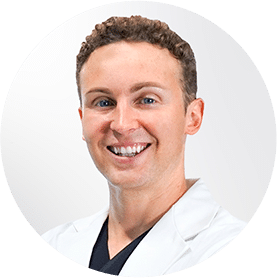Advice from a Renowned Back Pain Dr in Paramus
October 02, 2021
6 Dos and Don’ts to Keep in Mind when Exercising with Back Pain
Lower back pain exercises can help, but inappropriate ones might make things worse — and sometimes even send you to the emergency room.
Do you have a problem with your lower back? You’re not the only one. According to the Health Policy Institute, two-thirds of adults in the United States will have lower-back discomfort at some point in their life. The majority of back discomfort is mechanical, which means that daily stressors cause overload, and can be alleviated with minimally invasive treatments.
A small fraction of occurrences, fewer than 1%, are due to something more serious, such as a fracture, spine tumour, a systemic condition, and need medical treatment. It is important to see a back pain doctor if your pain is persistent, keeps you up at night, includes leg discomfort, or occurs after an accident.
Staying active is the greatest way to keep less significant back pain symptoms at bay. When you’re in pain, your natural reaction is to reduce activity, but this shouldn’t be the case with back pain symptoms. Exercise relaxes muscles and improves blood flow to the region, so it is quite beneficial.
Still, if you don’t want to do yourself more harm, you need to ensure that you are not performing physical activities that put too much pressure on the back. Fortunately, Dr George Hanna, a renowned back pain Dr in Paramus is here to tell us what we should and should not do when working out with back pain.

1. Don’t stop being active
When you are dealing with back pain, you may feel the urge to stay in bed until the discomfort goes away. However, research shows that staying in bed for more than a day or two might make your back pain symptoms worse or lead to new ones such as shoulder and neck pain due to muscle stiffness.
As experts suggest, simple activities are ideal when you’re first trying to recuperate from discomfort.
Walking is a great type of exercise to begin with, as well as stretches, yoga, and other light exercises meant to improve flexibility and strengthen the core. Ideally, you should walk for 10 to 15 minutes at a moderate pace two times a day, whether you are suffering from back pain or not.
2. Do stretches twice a day
Low-back aches can be relieved with correct stretches. Do 10 repetitions of the following light stretches both in the morning and in the evening for back pain relief:
- Back-pocket stretch: Stand up and then put both hands on your buttocks, as if you were placing them in the back pockets of your pants, then look up and arch your back, stretching the spine and muscles.
- Press-ups: Lie down on your stomach with your hands on the floor as if you were about to do a push-up. Keep your hips near the ground and lift just your upper body, leaving your lower back to slightly drop. Stay in this position for a few seconds.
Keep in mind that all types of exercises should be done following the medical advice of your back pain doctor, together with any pain management options they may suggest.
3. Do remember the activities that worsen pain
The most frequent type of back pain is extension syndrome, which produces pain upon standing. Extension syndrome can happen due to many causes, the most common ones being:
- Standing up with your knees too straight, almost pushing them backwards, which puts pressure on the joints and misaligns the spine
- Sitting for hours without utilizing your chair’s back support, which causes an unnatural curvature of the spine
Here’s how you can determine whether you’re suffering from extension syndrome: Lie on your back and stretch your legs for about 30 seconds. Bend the knees so that your heels come close to your buttocks, and stay in this position for 30 seconds as well. If you feel relief when your knees are bent, it most likely is extension syndrome.
Two other types of back discomfort are flexion syndrome and rotation syndrome.
Flexion syndrome is precisely the opposite of extension syndrome and most frequently happens when you improperly use the back support of your chair, pushing your hips and lower back towards it but keeping tour shoulders forward, which causes the spine to flex forth and leading to tight hamstrings or weak back muscles.
Rotation syndrome happens when the spine rotates towards one direction and is often caused by repetitive rotation movements towards a single direction, such as frequently turning to look at a screen. Sports such as tennis and golf can also lead to rotation syndrome.
4. Don’t push yourself too much
If bending backwards or doing a certain movement causes discomfort, then stop doing it. Insisting to perform an uncomfortable movement or stay in a certain posture might create further tissue injury and worsen current discomfort.
Focus on stability movements like planks if your workouts are hurting you. Perform 3 to 5 repetitions of 10- to 20-second holds and only move to more soliciting routines when the discomfort has passed.
5. Do adjust your posture
Back pain symptoms are frequently caused by slumping and slouching, especially in overweight individuals. To balance increased weight on the bones and joints, the pelvis might tilt, causing lower-back muscles to contract.
If you slouch, work on improving your posture. Standing upright and lining up your head, shoulders, hips, knees, and feet a few times a day will help to align your spine. When you have lower-back discomfort, this might help you relax. Also, wear low-heeled shoes, as high heels can cause an unsteady postural alignment.
6. Don’t skip the warmup
Many back pain problems arise when we apply pressure to the spine without first warming up. Perform some easy stretches before beginning activities such as resistance workouts or gardening.
Here’s an example: begin by getting down on your hands and knees, keeping your back straight and your head and neck aligned. Drop your belly to the ground and stare up at the ceiling as you inhale. Tuck your tummy in, arch your back, and drop your head to your chest as you exhale. Do it slowly and stop if you experience any discomfort.
Warm up for 5 to 10 minutes with a low-intensity aerobic program before beginning any activity. This helps the blood circulate and may help you prevent back discomfort.
If discomfort prevents you from enjoying your workout, it is time to let the pain doctors help you. Our clinic provides the latest treatment options to keep pain at bay, so don’t hesitate to schedule an appointment at one of your clinics in New York or at our Paramus clinic on Route 17, near the Paramus Park Mall.
Book a Consultation
Scheduling a consultation with one of our pain treatment specialists is one of the best ways to determine the proper solution for pain relief.
Meet Our Team of Back Pain Specialists
All of our Pain Doctors in New Jersey are Harvard Trained and Board Certified in Pain Management

Back Pain Doctor Clifton & West Orange NJ
Dr. George Hanna
Dr. Hanna is a Harvard Trained back specialist in New Jersey and New York. He serves as Medical Director of Pain Management.

Back Pain Doctor Clifton & West Orange NJ
Dr. Laura Lombardi
Dr. Lombardi is a Harvard Trained back pain treatment doctor, currently seeing patients in Clifton and West Orange, New Jersey.

Back Pain Doctor Clifton & West Orange NJ
Dr. Shane Volney
Dr. Volney is a Harvard Trained back treatment doctor seeing patients in the NJ areas of Clifton & West Orange, and in NYC.

Back Pain Doctor Clifton & West Orange NJ
Dr. Michael Nguyen
Dr. Nguyen is Harvard Trained and Board Certified in Pain Management. His pain center accepts major medical insurances and Medicare.

Dr. George Hanna

Dr. Laura Lombardi
Dr. Lombardi is a Harvard Trained back pain treatment doctor, currently seeing patients in Clifton and West Orange, and Paramus New Jersey.

Dr. Shane Volney
Dr. Volney is a Harvard Trained back treatment doctor seeing patients in the NJ areas of Clifton & West Orange, and in NYC.

Dr. Michael Nguyen
Dr. Nguyen is Harvard Trained and Board Certified in Pain Management. His pain center accepts major medical insurances and Medicare.
